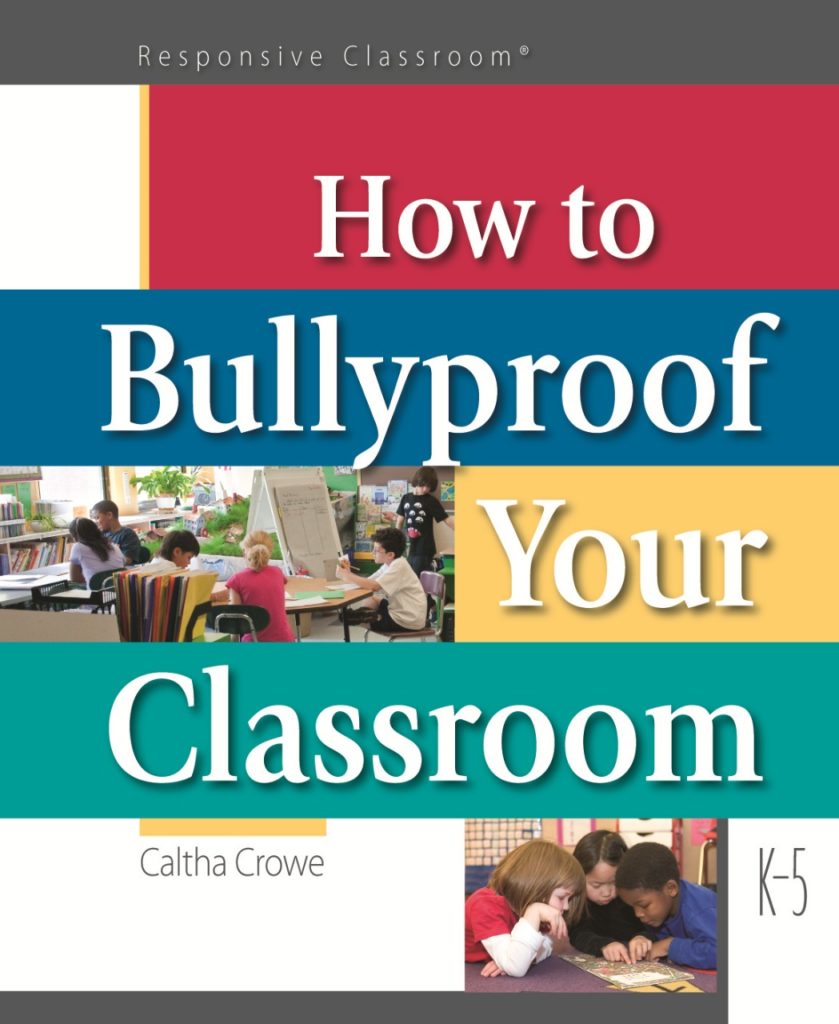
An adapted excerpt from the first chapter of How to Bullyproof Your Classroom
Bullying typically does not emerge from thin air. It starts with small, mean social behaviors, such as Missy’s whisper to Laticia as the children trickle into their third grade classroom: “Your hair’s nappy. You’ll never get a boyfriend.” Or Max’s competition with Jason to see if their parents will let them stay up late to watch the adult movie, Terminator. When Jason, a little abashed, reports that his mom made him miss the movie and go to bed on time, Max smirks.
These “gateway behaviors,” as they’re called by Elizabeth Englander of the Massachusetts Aggression Reduction Center (MARC), may seem like just a part of normal childhood. But bullying experts Barbara Coloroso, Stephen Wessler, and others have found that when such small acts of social aggression go unchecked, they can become the accepted mode of interaction.
Once that happens, children may quickly move from poking fun or smirking to openly calling classmates mean names and then to pinching, shoving, and excluding the targeted classmate from recess games or classroom conversations.
What should you do when gateway behaviors emerge in your classroom? Chapter One of How to Bullyproof Your Classroom addresses this question in detail, but in short, it’s important to notice small, mean acts, nip them in the bud, and actively teach kindness before gateway behaviors blossom into out-and-out bullying. Here are some strategies that I and other teachers have found useful for doing just that.
My own experience, as well as a great deal of research, shows that we teachers often don’t notice gateway behaviors, even those happening when we’re present. To change that, we need to deliberately make time for noticing. This might seem daunting in a day already packed with responsibilities. Nonetheless, it can be done with small adjustments to our daily routines. Here are some ideas.
Are interactions between students good-natured joshing between social equals or true gateway behaviors? Some things to look for:
Once you’ve done some observing so that you understand students’ social interactions, the next step is to stop behaviors that might be gateways to bullying—quickly. A rule of thumb suggested by Elizabeth Englander of MARC is to spend the first two seconds noticing what’s going on and the next seven seconds briefly and firmly responding.
Although you may need more than two seconds to figure out what’s going on when one student rolls his eyes or makes a mean joke, Ms. Englander’s guideline fits my experience working with children. A quick response shows the child behaving meanly, the child targeted, and those nearby that mean behavior is unacceptable.
When adults don’t respond quickly, conditions are set for mean behaviors to flourish. Bystanders may think the behavior is acceptable. Children who behave meanly miss the opportunity to learn about the impact of their behavior and how to behave differently. Targeted children may begin to believe that they somehow deserve the treatment they’re getting.
It’s important to model respectful behavior toward all students, including children who are being unkind. Disrespect, a harsh tone, or sarcastic words can escalate the mean behaviors you’re trying to stop. When, instead, you use calm and matter-of-fact tone, words, and body language, you model behaviors that promote a climate of respect. Here are two strategies to try:
Short, simple, matter-of-fact statements about what behavior you expect are most effective in stopping gateway behaviors: “Our rules say to be kind; that statement was not kind. Try again.” Although it’s tempting to go on and on, telling children all the ramifications of their actions, they’re likely to tune out if you do.
Notice, in the above example, that the teacher referred to the classroom rules. Having a set of rules that children are invested in is crucial to preventing mean behaviors. When children understand that rules can help keep everyone safe, referring to those rules can provide a solid framework for stopping small cruelties. It can also avoid a power struggle with the student: It’s the rules, not the teacher, saying to stop the mean behavior. (For more about creating classroom rules that children connect to and believe in, see Chapter Three of How to Bullyproof Your Classroom or the book Rules in School.)
Logical consequences are ways of handling misbehavior that help children see the effect of their actions on others and take responsibility for changing their behavior.
As with any other strategy for stopping gateway behaviors, logical consequences work best when used in a matter-of-fact, nonpunitive way. The goal is to teach children a better way to behave, not to shame them. Here are some important guidelines.
Bullying usually starts with small, mean, gateway behaviors that gradually escalate when adults fail to respond, or respond inappropriately. It’s absolutely critical that we learn to see and respond immediately to gateway behaviors. Doing so will help transform our classrooms into places of safe and joyful learning for all children.